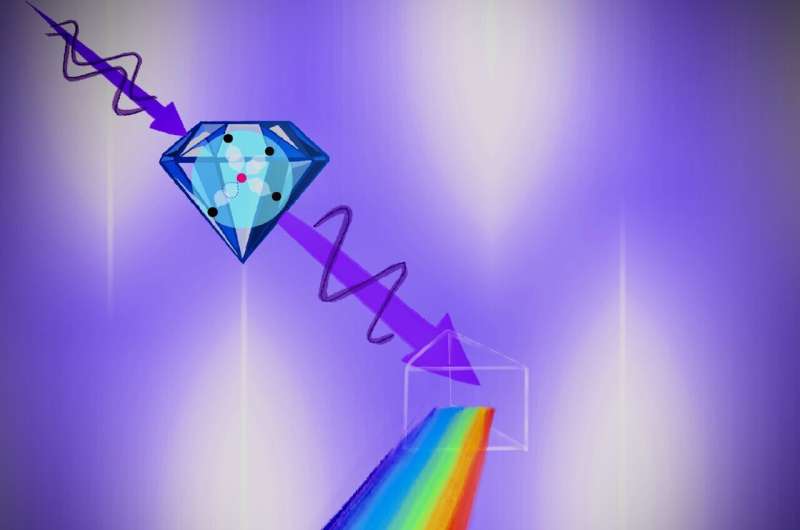This article has been reviewed according to Science X's editorial process and policies. Editors have highlighted the following attributes while ensuring the content's credibility:
fact-checked
trusted source
proofread
Diamonds are a chip's best friend: Research determines spin-orbit effects on exciton complexes

Besides being "a girl's best friend," diamonds have broad industrial applications, such as in solid-state electronics. New technologies aim to produce high-purity synthetic crystals that become excellent semiconductors when doped with impurities as electron donors or acceptors of other elements.
These extra electrons—or holes—do not participate in atomic bonding but sometimes bind to excitons—quasi-particles consisting of an electron and an electron hole—in semiconductors and other condensed matter.
Doping may cause physical changes, but how the exciton complex—a bound state of two positively-charged holes and one negatively-charged electron—manifests in diamonds doped with boron has remained unconfirmed. Two conflicting interpretations exist of the exciton's structure.
An international team of researchers led by Kyoto University has now determined the magnitude of the spin-orbit interaction in acceptor-bound excitons in a semiconductor.
"We broke through the energy resolution limit of conventional luminescence measurements by directly observing the fine structure of bound excitons in boron-doped blue diamond, using optical absorption," says team leader Nobuko Naka of KyotoU's Graduate School of Science.
"We hypothesized that, in an exciton, two positively charged holes are more strongly bound than an electron-and-hole pair," adds first author Shinya Takahashi. "This acceptor-bound exciton structure yielded two triplets separated by a spin-orbit splitting of 14.3 meV, supporting the hypothesis."
Luminescence resulting from thermal excitation can be used to observe high-energy states, but this current measurement method broadens spectral lines and blurs ultra-fine splitting.
Instead, Naka's team cooled the diamond crystal to cryogenic temperatures, obtaining nine peaks on the deep-ultraviolet absorption spectrum, compared to the usual four using luminescence. In addition, the researchers developed an analytical model including the spin-orbit effect to predict the energy positions and absorption intensities.
"In future studies, we are considering the possibility of measuring absorption under external fields, leading to further line splitting and validation due to changes in symmetry," says Université Paris-Saclay's Julien Barjon.
"Our results provide useful insights into spin-orbit interactions in systems beyond solid-state materials, such as atomic and nuclear physics. A deeper understanding of materials may improve the performance of diamond devices, such as light-emitting diodes, quantum emitters, and radiation detectors," notes Naka.
The work is published in the journal Physical Review Letters.
More information: Shinya Takahashi et al, Spin-Orbit Effects on Exciton Complexes in Diamond, Physical Review Letters (2024). DOI: 10.1103/PhysRevLett.132.096902
Provided by Kyoto University





















